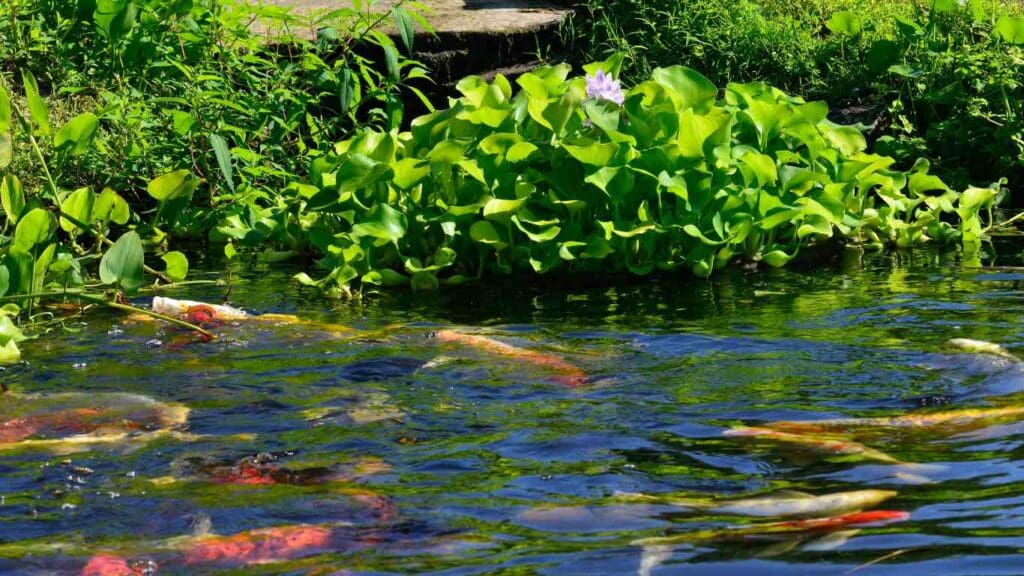If you’re a koi pond owner, you may have heard about water hyacinth and its potential benefits for your pond. Water hyacinth is a floating plant that can help improve water quality, provide shade for fish, and create a natural habitat for aquatic creatures. However, you may also have concerns about whether water hyacinth is safe for your koi and how to manage its growth in your pond.
In this article, we’ll explore the topic, ‘Are Water Hyacinth Good for Koi Ponds,’ to provide you with comprehensive insights. We’ll discuss the benefits of water hyacinth, potential risks to consider, and tips for managing its growth in your pond. By the end of this article, you’ll have a better understanding of whether water hyacinth is a good addition to your koi pond and how to make an informed decision for your aquatic pets.
Are Water Hyacinth Good for Koi Ponds- Core Insights:
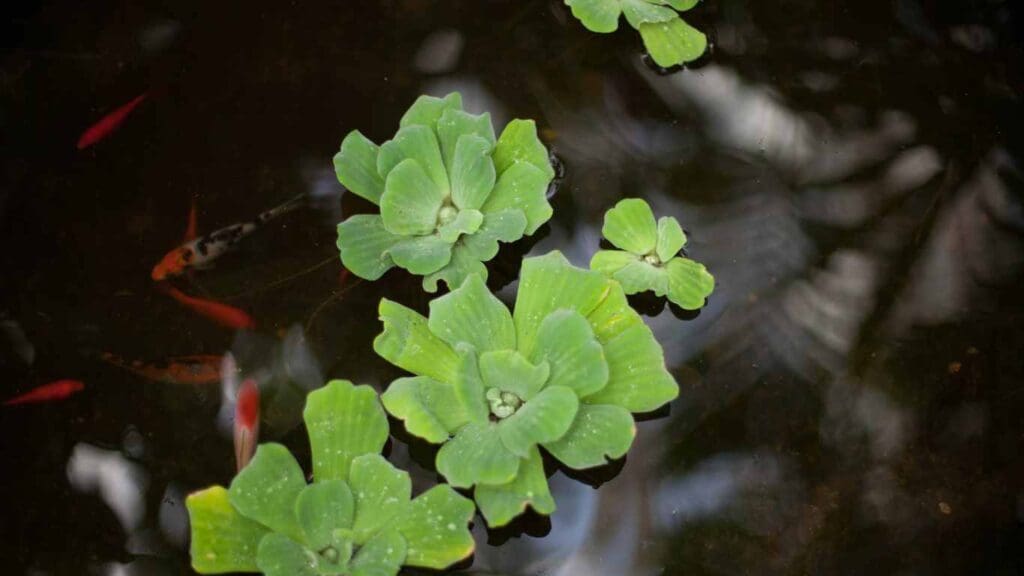

Understanding Water Hyacinth
If you are considering adding water hyacinth to your koi pond, it is important to understand what this plant is and how it can benefit your pond. Water hyacinth (Eichhornia crassipes) is a free-floating aquatic plant that is native to South America. It is known for its beautiful lavender-blue flowers and thick green leaves.
One of the main benefits of water hyacinth is its ability to naturally filter the water in your koi pond. This plant absorbs nutrients such as ammonia, nitrates, and phosphates from the water, which helps prevent algae blooms and keeps the water clear. In addition to its filtration properties, water hyacinth also provides shade and cover for your koi, which can help reduce stress and protect them from predators.
However, it is important to note that water hyacinth can also have some drawbacks. If left unchecked, this plant can grow rapidly and take over your pond, which can cause problems for your koi and other aquatic life. Additionally, water hyacinth can be sensitive to cold temperatures and may not survive in areas with harsh winters.
Overall, water hyacinth can be a great addition to your koi pond if managed properly. By understanding the benefits and drawbacks of this plant, you can make an informed decision about whether it is right for your pond.
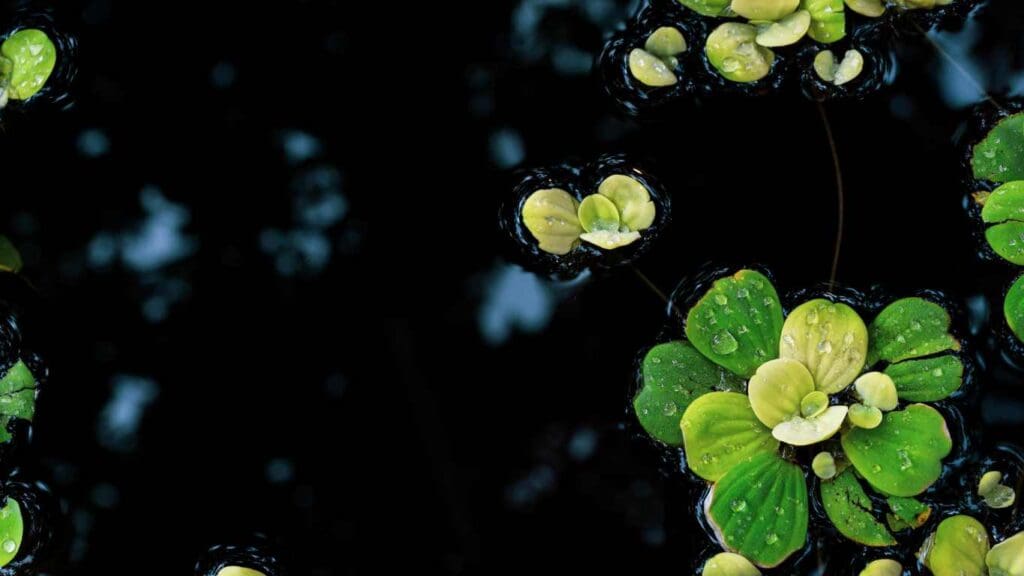

The Benefits of Water Hyacinth in Koi Ponds
Water hyacinth (scientifically known as Eichhornia crassipes) is a popular aquatic plant that can provide several benefits to your koi pond. Here are some of the advantages of having water hyacinth in your koi pond:
Natural Filtration
One of the main benefits of water hyacinths is their ability to naturally filter the water in a koi pond. These plants absorb nutrients such as ammonia, nitrates, and phosphates from the water, which helps prevent algae blooms and keeps the water clear. By removing these harmful nutrients, water hyacinths can improve the water quality and create a healthier environment for your koi.
Shade and Shelter
Water hyacinths can also provide shade and shelter for your koi. The floating leaves of water hyacinths can help to reduce the amount of sunlight that enters the pond, which can help to regulate the water temperature and prevent excessive algae growth. Additionally, the roots and leaves of water hyacinths can provide hiding places for your koi, which can help to reduce stress and improve their overall health.
Premium Water Hyacinth Floating Aquatic Live Tropical Plants
Food Source
Water hyacinths can also serve as a food source for your koi. Koi are omnivorous and enjoy a varied diet, so adding water hyacinths to their diet can provide them with additional nutrients and help to prevent boredom. However, it is important to note that water hyacinths should not be the sole source of food for your koi, as they do not contain all of the necessary nutrients that your koi need to thrive.
In short, water hyacinths can provide several benefits to your koi pond, including natural filtration, shade and shelter, and a food source. Adding water hyacinths to your koi pond can help to create a healthier environment for your koi and improve their overall well-being.
Potential Risks of Water Hyacinth in Koi Ponds
When considering incorporating water hyacinth into your koi pond, it’s important to be aware of the potential risks that they may pose. While water hyacinth can provide benefits such as shade and oxygenation, they can also cause issues with overgrowth and water chemistry.
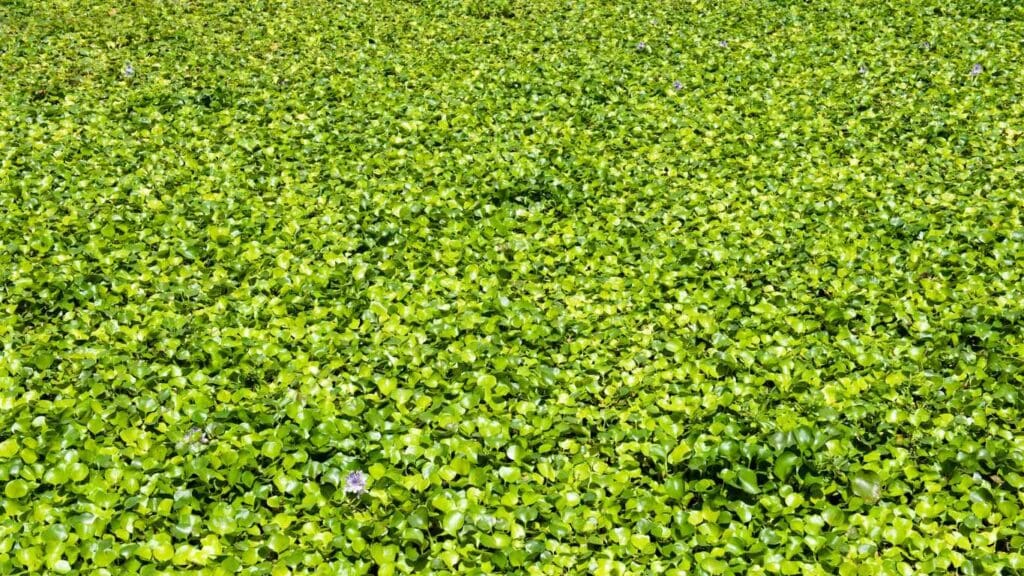

Overgrowth Issues
Water hyacinth has a rapid growth rate, and if left unchecked, it can quickly take over your pond. This can lead to a number of problems, including:
- Reduced oxygen levels: As water hyacinth covers the surface of your pond, it can block out sunlight and prevent oxygen from entering the water. This can lead to oxygen depletion, which can be harmful to your koi.
- Clogged filters: Water hyacinth can clog your pond’s filters and pumps, reducing their effectiveness and potentially causing damage.
- Reduced water flow: As water hyacinth grows, it can impede water flow in your pond, creating stagnant areas and potentially leading to the buildup of harmful bacteria.
To prevent overgrowth, it’s important to regularly monitor and trim your water hyacinth. You may also want to consider using a pond net to prevent the plants from spreading.


Impact on Water Chemistry
Water hyacinth can also have an impact on your pond’s water chemistry. As the plants grow and die, they can release nutrients and organic matter into the water, leading to issues such as:
- Algae blooms: Excess nutrients in the water can lead to the growth of algae, which can be unsightly and potentially harmful to your koi.
- Poor water quality: Organic matter released by water hyacinth can contribute to high levels of ammonia and nitrites in the water, which can be toxic to your koi.
To mitigate these issues, it’s important to maintain a balance between your water hyacinth and other pond plants. You may also want to consider adding beneficial bacteria to your pond to help break down organic matter and maintain healthy water chemistry.
Overall, water hyacinth can be a valuable addition to your koi pond, but it’s important to be aware of the potential risks and take steps to prevent overgrowth and maintain healthy water chemistry.
Managing Water Hyacinth in Koi Ponds
If you have a koi pond, you may be wondering whether water hyacinth is a good plant to have in it. While water hyacinth can be a beautiful addition to any aquatic setting, it can also cause problems if not managed properly. Here are some tips for managing water hyacinth in your koi pond.
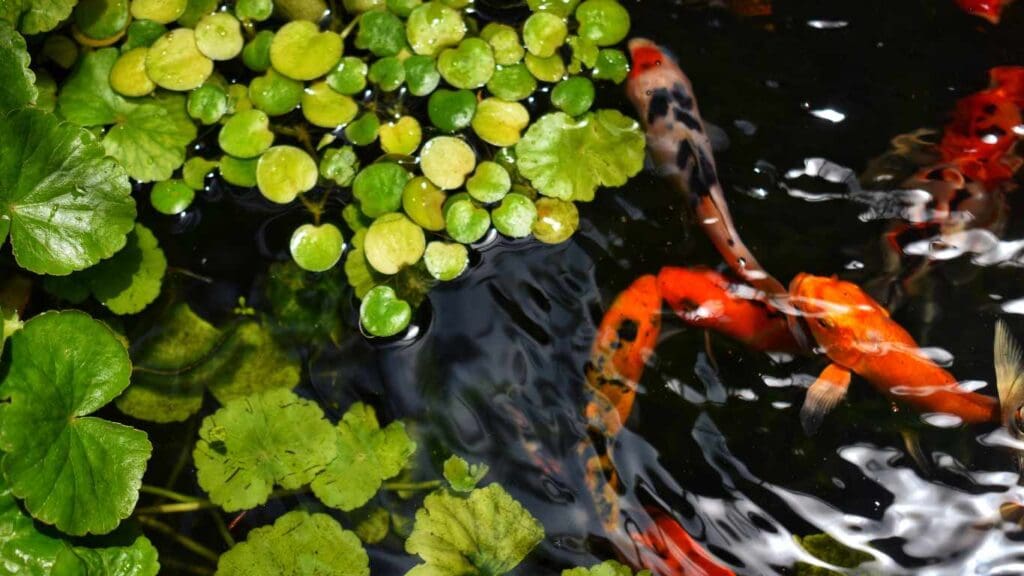

Regular Monitoring
Regular monitoring is essential to keep water hyacinth under control. You should check your pond regularly to ensure that the plants are not growing too quickly or becoming too dense. If you notice that the water hyacinth is growing too quickly, you may need to remove some of the plants.
One way to remove water hyacinth is to rake or seine it from the pond’s surface. Another option is to use a herbicide, but this should only be done as a last resort and should be used with caution.
Proper Disposal
Proper disposal of water hyacinth is also important. You should never dispose of water hyacinth in a natural waterway, as it can quickly spread and become invasive. Instead, you should dispose of it in a compost pile or dispose of it in the trash.
It’s also important to note that water hyacinth can absorb nutrients that your koi need to thrive. If you have a heavily stocked koi pond, water hyacinth may not be the best choice for natural filtration. In this case, you may want to consider other plants or filtration methods.
In brief, water hyacinth can be a beautiful addition to your koi pond, but it requires regular monitoring and proper disposal to prevent it from becoming a problem. Keep an eye on the growth rate of the plant and dispose of it properly to avoid spreading it to other waterways.
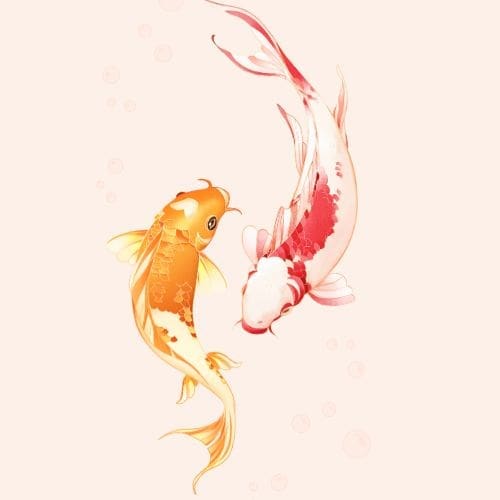

Get the Information You Need Direct from Koi Pond Experts
Join Now!
Final Remarks
Water hyacinths can be a great addition to your koi pond if used in moderation and monitored closely. They provide natural filtration, shade, and habitat for your fish but can also overgrow and cause harm if left unchecked.
It’s important to carefully manage their growth and consider the potential issues they may present. While they can help oxygenate the water and provide natural filtration, they can also deplete oxygen levels if they overgrow and cover the surface of the pond. This can be harmful to your koi and other aquatic life.
Additionally, water hyacinths can be invasive and quickly take over a pond if not managed properly. It’s important to regularly remove excess plants and trim back growth to prevent overpopulation and maintain a healthy balance in your pond’s ecosystem.
Overall, water hyacinths can be a valuable addition to your koi pond, but it’s important to approach their use with caution and careful consideration. With proper management and monitoring, they can provide a beautiful and functional addition to your aquatic garden.
Frequently Asked Questions
Are water hyacinths safe for koi?
Water hyacinths can be safe for koi if used in moderation and monitored closely. They provide natural filtration, shade, and habitat for your fish but can also overgrow and cause harm if left unchecked. Make sure to keep an eye on the growth rate and remove any excess plants regularly.
Are water hyacinths good for fish ponds?
Water hyacinths offer several benefits when added to a koi pond. Firstly, they provide shade and cover for your koi fish, which can help reduce stress and protect them from predators. The floating leaves of water hyacinths create a natural canopy that shields the fish from direct sunlight and provides a safe haven for them to rest. Additionally, water hyacinths absorb excess nutrients from the pond water, which can help improve water quality.
Is water hyacinth bad for ponds?
Water hyacinths can be harmful to ponds if they are allowed to overgrow and take over the entire pond. This can cause oxygen depletion, which can lead to fish kills and other problems. It is important to monitor the growth rate of water hyacinths and remove any excess plants regularly to prevent this from happening.
What plants will koi not eat?
Koi are known for their voracious appetites and will eat almost anything that is put in front of them. However, there are some plants that they are less likely to eat, such as water lilies, lotus, and other floating plants like duckweed and water lettuce.
How do you plant a water hyacinth in a koi pond?
To plant a water hyacinth in a koi pond, simply place the plant in the water and let it float freely. Water hyacinths do not need to be anchored to the bottom of the pond and will grow best when allowed to float on the surface.
Where to buy Koi Pond plants?
You can buy koi pond plants at many garden centers, nurseries, and online retailers. Make sure to choose plants that are suitable for your specific pond environment and that will not harm your fish.
 1 (509) 228-8646
1 (509) 228-8646


